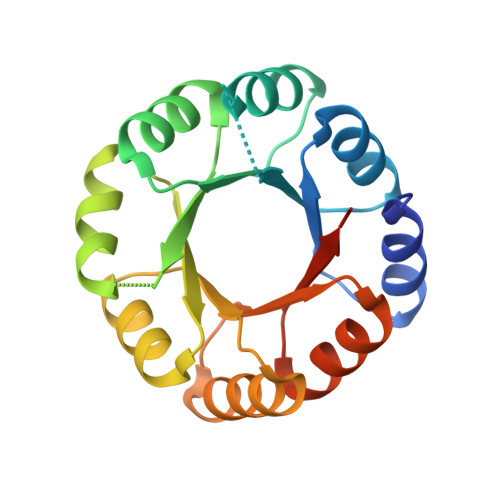A newly introduced salt bridge cluster improves structural and biophysical properties of de novo TIM barrels.
Kordes, S., Romero-Romero, S., Lutz, L., Hocker, B.(2022) Protein Sci 31: 513-527
- PubMed: 34865275
- DOI: https://doi.org/10.1002/pro.4249
- Primary Citation of Related Structures:
7OSU, 7OSV, 7OT7, 7OT8, 7P12 - PubMed Abstract:
Protein stability can be fine-tuned by modifying different structural features such as hydrogen-bond networks, salt bridges, hydrophobic cores, or disulfide bridges. Among these, stabilization by salt bridges is a major challenge in protein design and engineering since their stabilizing effects show a high dependence on the structural environment in the protein, and therefore are difficult to predict and model. In this work, we explore the effects on structure and stability of an introduced salt bridge cluster in the context of three different de novo TIM barrels. The salt bridge variants exhibit similar thermostability in comparison with their parental designs but important differences in the conformational stability at 25°C can be observed such as a highly stabilizing effect for two of the proteins but a destabilizing effect to the third. Analysis of the formed geometries of the salt bridge cluster in the crystal structures show either highly ordered salt bridge clusters or only single salt bridges. Rosetta modeling of the salt bridge clusters results in a good prediction of the tendency on stability changes but not the geometries observed in the three-dimensional structures. The results show that despite the similarities in protein fold, the salt bridge clusters differently influence the structural and stability properties of the de novo TIM barrel variants depending on the structural background where they are introduced.
Organizational Affiliation:
Department of Biochemistry, University of Bayreuth, Bayreuth, Germany.















